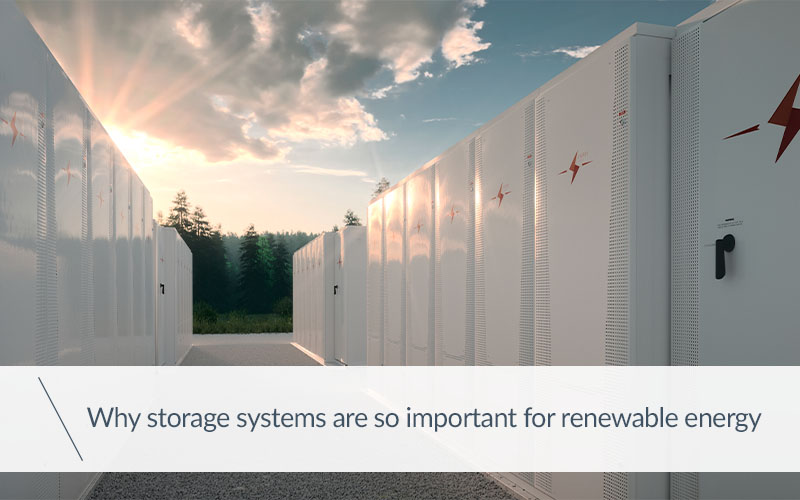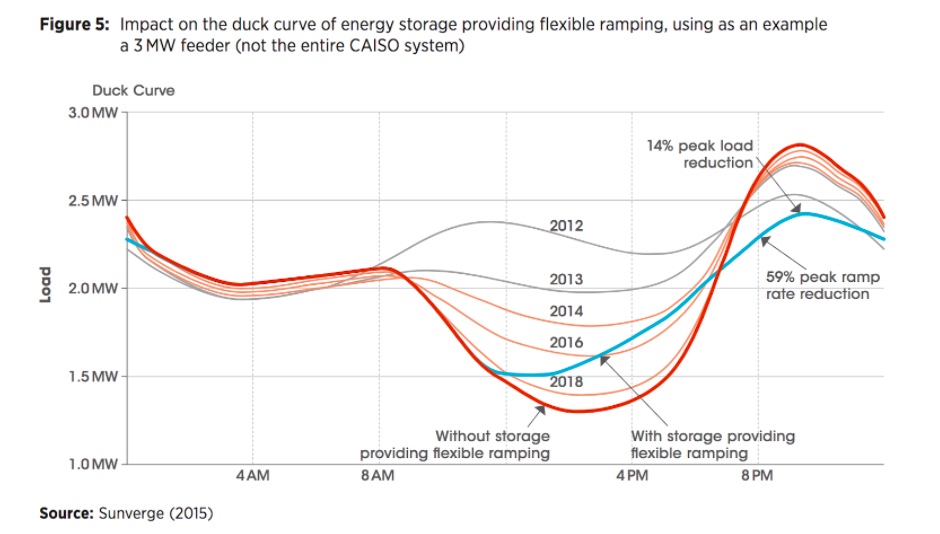
In order to exactly reach the decarbonisation goals that have been set internationally for 2050, the energy transition will occupy a vital role, with progressive decommissioning of coal and petroleum power stations and the increase of renewables in the so-called energy mix.
Unfortunately, renewable energies, in particular solar and wind, are intrinsically intermittent in nature, thus impeding the possibility of achieving the complete energy independence relying on these sources alone.
In the real world, the sun does not shine 24 hours a day, and the absorption capacity of solar energy on cloudy days is notably reduced, indeed the same is true for wind-generated energy, as wind does not always blow with the same intensity, without even considering that some countries, due to their geographical location, are inescapably less “wealthy” in terms of renewable energy sources.
Consequently, during the hours when energy is lost or unavailable, either totally or partially, it remains necessary to feed from the electric grid, which is currently mostly fueled by one or more fuel types with a substantial impact in terms of carbon emissions. Then of course we must also consider moments of peak demand, for example in summer months due to the use of air conditioning units.
To overcome this problem, and pursue increased dependence on the new energy sources, investment in energy storage systems is a top priority.
The importance of energy storage
As affirmed by IRENA, the International Renewable Energy Agency, storage systems are emerging as one of several key solutions to effectively integrate high levels of renewable solar and wind energy into energy systems across the world.
How is that achieved? Previously we mentioned that solar and wind are intermittent renewable energy sources, and this means that their capacity to produce energy varies over time, even over a single day.
It can happen, for example, that on certain occasions weather conditions are so good that those energy sources can cover user demand for the equipment and devices in use, even creating a surplus, which is not utilized and can be transferred to the network. Conversely, there are other times when production is insufficient, requiring access to the grid in order to cover the shortfall in energy.
Yet battery storage systems permit the accumulation of the excess energy produced by wind and solar farms during favorable weather conditions, which can then be tapped into on demand when it is needed, thus fortifying the electric grid.
Battery storage systems: FTM and BTM
We have observed that battery storage systems are one of the potential solutions to increase system flexibility, due to their unique capacity to absorb, hold and release electricity quickly.
Unlike conventional storage systems, batteries have the advantage of geographical and size flexibility, and can therefore be installed closer to where they are actually needed and can be easily calibrated according to real requirements.
Industrial scale storage battery systems have a typical accumulation capacity which can vary from just a few kWh to hundreds of MWh, according to their dimensions.
A range of battery storage technologies, such as lithium (Li-on) or Sulphur batteries, and Lead acid batteries, can be used for all network applications. However, in the last few years, the greatest growth can be seen in the Li-ion batteries.
As explained by the IRENA publication, market applications for storage batteries are commonly split into:
- Front of the meter (FTM): FTM batteries are connected to distribution or transmission networks or in connection with a generation asset. They provide applications required by system operators, such as ancillary services or network load relief.
- Behind-the-meter (BTM): BTM batteries are interconnected behind the utility meter of commercial, industrial or residential customers, primarily aiming at electricity bill savings through demand-side management.
BTM batteries are, generally speaking, small in size, and for this reason they are suitable for widespread usage, further aided by a constant and progressive fall in production prices.
Once installed in the clients’ premises (home, office, factory) BTMs are effectively out of direct control of the distribution system provider; however, there are a number of projects in place whereby the users are remunerated for permitting the system providers to withdraw electricity from the batteries as required.
Thus, it is genuinely possible to achieve financial gain by feeding accumulated energy back into the energy network.
What are the advantages of a storage system?
Battery storage systems have a series of advantages, both for the end users (in homes, offices, industrial premises) and for the producer, distributor and the actual physical grid.
Let’s take a look at these advantages.
1. Frequency regulation and flexibility
One of big issues which storage systems can help solve is the imbalance between electrical energy supply and demand by consumers, in other words between the quantity of energy produced and what is required.
Generally speaking, Nations tend to bypass this gap by activating coal and/or petroleum power stations, which is an inefficient and expensive solution as it requires a large number of power stations to be in a state of constant standby, or to function only at partial capacities, lower than attainable ones, thereby consuming fuel in an ineffective way and increasing electricity costs.
Furthermore, this system has somewhat lengthy reaction and adjustment times, whilst storage systems can be instantly activated, ensuring increased flexibility within the energy system.
Instant activation and widespread distribution across domestic consumers, means that energy production from renewable intermittent sources such as solar energy can be tracked, and adjusted automatically.
Thus, during the sunlight hours of the day, energy is accumulated, and can then be consumed once the sun has set, following the so-called Duck Curve.

2. An alternative to diesel generators
To be able to cope with unexpected blackouts, in most cases diesel-fueled generators are adopted, which have a considerable environmental impact.
The same kind of backup system for blackouts could be obtained by installing battery storage systems, which, if fueled with renewable energy, could have a considerably lower environmental footprint.
This would also be an optimal solution in those parts of the world not sufficiently covered by a centralized distribution network (for example islands and remote areas of the world).
3. Reduction in transmission and distribution congestion
During peak hours, transmission and distribution networks may exceed capacity, causing congestion.
Usually, operators intervene by investing in new transmission and distribution assets in order to increase overall network capacity, but this solution is not always possible and/or economically advantageous.
Indeed, expanding the electrical network is by no means a simple task, requiring substantial investments and lengthy average lead times.
Alternatively, a battery storage system can be installed close to areas which suffer congestion, which is already happening in several counties, to improve system performance and reliability.
This would allow not only a faster and smarter management, but would also optimize investments, by installing exactly the storage capacity required, thus avoiding oversizing the network, an inevitable occurrence given the standardized dimensions of the devices available.
What does that mean? Well, if the difference in energy produced and that required in peak moments is on average equal to 1-3%, then the investment necessary to upgrade the network would generally bring about an increase of 25%, much more than necessary.
Via battery usage on the other hand, that 1-3% can be dealt with by installing a battery storage system of exactly that capacity, or just slightly above.
4. Savings on electric bills
The increase in auto-consumption brought about by the installation of solar panels on roof spaces together with a BTM battery system, can generate a considerable saving on an electricity bill.
When usage time tariffs are applied, BTM battery storage systems will allow consumers to reduce their electricity costs by charging the batteries in off-peak periods, when tariffs are lower, and discharge during peak times, when tariffs are higher.
Basically, batteries are charged when energy costs are low, and energy is consumed, or sold back to suppliers or distributors, when the price is higher.
If this scenario is applied to non-domestic situations, the savings can become significant indeed, as demonstrated in multiple examples in the USA, Germany and other European countries.



